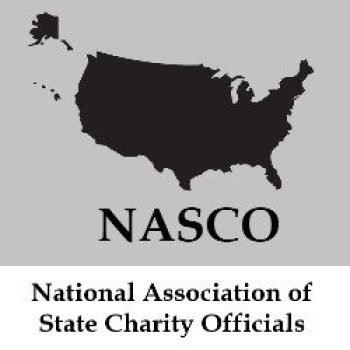This year’s National Association of Attorneys General/ National Association of State Charity Officials (NAAG/NASCO) Conference was held virtually on October 11, 2023. Topics included the state of the nonprofit sector, state enforcement updates and governance, leadership, and organizational structure issues.
State of the Nonprofit Sector
Tim Delaney, President & CEO, and Donna Murray-Brown, Vice President of Strategy and Development at the National Council of Nonprofits, presented an overview of the charitable community. Included in their discussion was the current scale and scope of the sector, external threats to its sustainability, and ideas for how state charity regulators and members of the sector can continue to work together to better protect and serve the community.
External threats include an increased demand for nonprofit services in an environment of increased costs and reduced contributions. At the same time, nonprofits are faced with the antiquated and broken systems of government contracts and grants while the sector is experiencing a workforce shortage. This has weakened the delivery of services to the public.
Charity regulators and nonprofits are encouraged to work together to protect and serve the public by focusing their efforts on preventing bad actors from misuse of the charitable nonprofit system and on stopping scam artists from masquerading as charitable nonprofits.
Lessons in Nonprofit Governance from the Big and Small Screen
Gene Takagi, principal of Neo Law Group, entertained participants with key points about “good and not-so-good governance” by quoting characters from popular television shows and movies. My favorites included Ted Lasso (“Believe”), Captain America (“How do we do this? As a team!”), Spiderman (“With great power comes great responsibility”) and Dumbledore (“it takes a great deal of bravery to stand up to your enemies, but a great deal more to stand up to your friends”). Gene used the quotes to walk participants through key issues of the duties of care and loyalty, delegation, trust and reliance, board composition and vacancies, succession planning, prohibition of private benefits, as well as governance and charitable solicitations. For more detail, read Gene’s Lessons in Nonprofit Governance from the Screen.
Purpose Driven Board Leadership
Dani Robbins, Director of Governance Strategy at Board Source, delved into a new way of framing nonprofit board members’ roles through a discussion about purpose-driven board leadership which prioritizes purpose and mission over the organization’s needs. In summary, this framework is premised upon four principles.
Purpose Before Organization
Prioritizing the organization’s purpose and the problems it addresses versus the organization as an entity by reframing the “duty of loyalty as the center of its own gravity” to how the organization can best steward its resources to serve its purpose.
Respect for Ecosystem
Acknowledgment that because an organization’s actions have an impact on the ecosystem it requires an obligation to consider the organization’s actions as part of its decision-making processes.
Equity Mindset
Commitment to advancing equitable outcomes, avoiding ways in which the organization’s work may reinforce systemic inequities and being willing to break down barriers that may have been created by the organization in the past. This must be applied across a number of areas including allocation of the organization’s resources, programmatic oversight, and creating a diverse and inclusive board.
Authorized Voice and Power
Recognition that the organization’s power and voice must be informed and authorized by those who are impacted by the organization’s work, which requires decisions to be made in the context of real understanding of community assets, needs, preferences, and aspirations, listening to community needs and experiences, and sharing power by inviting individuals to the board who have relevant lived experiences.
Reframing for purpose requires a shift in focus from the board’s traditional position of operating in service to the organization to a primary responsibility for sustaining the organization and its ability to exist in service to its mission and to its service for the public good with a primary responsibility to steward organizational capacity such that it maximizes positive effect to that core purpose.
The Uses of Different Business Structures by Charities
While the agenda promised a discussion of “some of the latest developments in what can be complex arrangements and structures in the section,” this session focused on just one – the Versatile LLC. Sharon Lincoln, Partner with Casner & Edwards, LLC, shared her insights about the Versatile LLC in the session “What Board Members and State Regulators Need to Know”.
She explained that a limited liability company (LLC) is the U.S. version of a private limited company, one that provides flexible tax treatment and limited liability for its members. It offers three options for the tax classification -corporation, partnership, or disregarded entity. Ms. Casner then focused her discussion on answering the following three questions.
Can an LLC operate for philanthropic purposes?
The short answer is yes, but it requires a review and understanding of statutory considerations, the LLC’s certificate of formation and operating agreement, as well as who or what are the members of the LLC and how the activities of the LLC will be funded.
Can an LLC operate as or be a 501(c)(3) organization?
A single-member LLC may be a subsidiary of a 501(c)(3) organization (see also IRS Notice 2021-56 which permits an LLC to apply on its own for recognition as a 501(c)(3) under certain circumstances).
When can an LLC be useful to a charity?
This answer depended upon the various forms of corporation, partnership, or disregarded entity.
The discussion concluded with some state-specific considerations, such as what purposes the LLC statute permits and charity bureau oversight in related-party transactions, mergers, asset transfers and dissolution.
State Update
Unfortunately, noticeably lacking in this year’s conference was a robust discussion about the state regulators’ enforcement efforts. Only twenty minutes of the five hours allocated were devoted to sharing enforcement updates. The Annual Report on State Enforcement and Regulation, which highlights enforcement actions in the areas of deceptive solicitations, governance and trusts and estates, as well as summarizes outreach efforts and published guidance, transaction reviews and updates regarding regulations and legislation was provided with the conference materials. It was not, however, a substitute for the usual color and insight that have been shared with conference attendees in the past, a key incentive for attendance by members of the sector.
- Tracy L. Boakhttps://perlmanandperlman.com/author/tracyboak/
- Tracy L. Boakhttps://perlmanandperlman.com/author/tracyboak/
- Tracy L. Boakhttps://perlmanandperlman.com/author/tracyboak/
- Tracy L. Boakhttps://perlmanandperlman.com/author/tracyboak/







